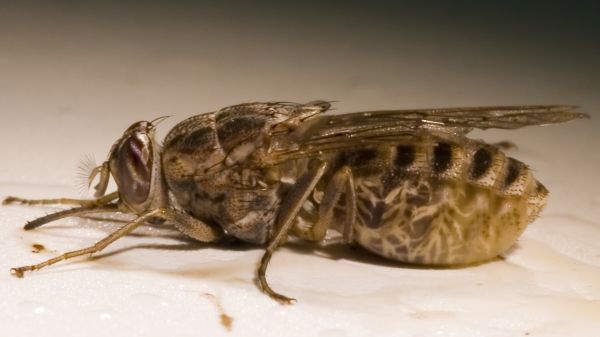The study, published in PLOS Medicine (link is external), is based on 27 years of data from Mana Pools National Park in Zimbabwe. The mathematical model developed by Dr Lord and co-authors suggests that temperature increases over the last three decades have already caused major declines in local populations of tsetse flies, thereby providing a first step in linking temperature to the risk of sleeping sickness in Africa.
Dr Lord said: “If the effect at Mana Pools extends across the whole of the Zambezi Valley, then the transmission of trypanosomes is likely to be have been greatly reduced in this warm low-lying region.” While that is good news for the disease situation in Zambezi Valley, “rising temperatures may have made some higher, cooler parts of Zimbabwe, more suitable for tsetse flies.”
Tsetse are blood-feeding insects that transmit trypanosome pathogens which cause the potentially fatal sleeping sickness in humans across sub-Saharan Africa. The parasites also cause a similar disease in livestock, with recent estimates indicating about one million cattle deaths per year.
Continue reading at Liverpool School of Tropical Medicine
Image via Liverpool School of Tropical Medicine


